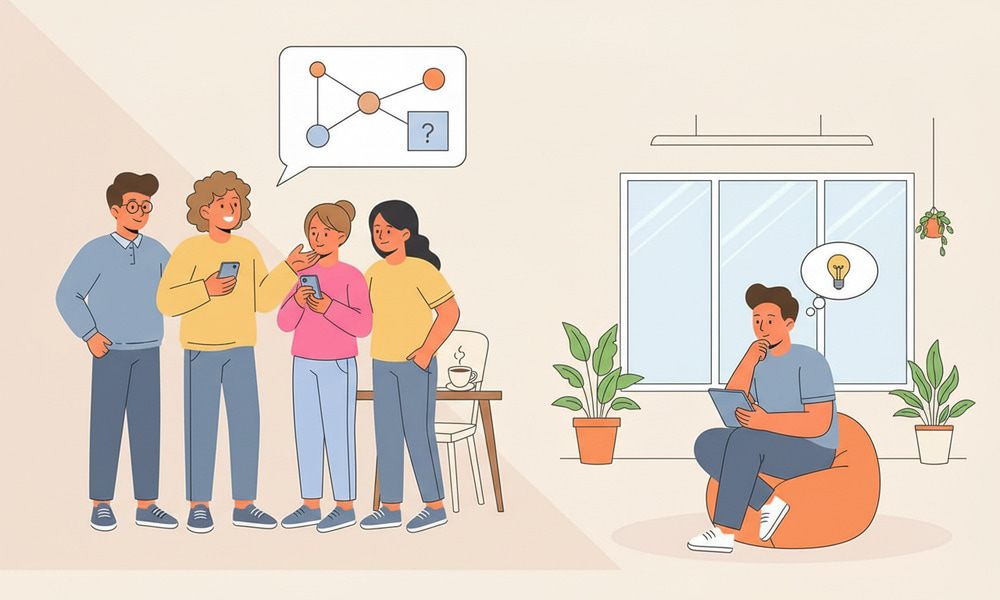An Accurate Enneagram Test for Your Personality
New Updates



Take Enneagram Personality Test Online
Get StartedReveal Your True Potential With the Enneagram Test
Beyond trendy labels, this psychological map describes nine motivational patterns that influence how people think, feel, and act under stress and in flow. The framework illuminates core fears, desired strategies for safety, and the narratives we repeat when navigating relationships or work. Rather than boxing anyone in, it uncovers adaptive strengths and habitual blind spots so you can choose more skillful responses. Practitioners value it for its nuance because it addresses intention and attention, not only observable behavior. With careful reflection, the model becomes a vocabulary for inner dynamics, communication, and sustainable change.
Modern platforms vary widely in length, depth, and scoring, yet the most useful tools emphasize clarity and integration over buzzwords. In practical terms, a thoughtfully designed Enneagram test explores core drivers and fears in everyday life. Many sites pair scoring with narrative interpretations and coaching prompts to encourage embodied learning and iterative growth. For newcomers seeking a simple entry point, a mainstream Enneagram personality test can translate abstract concepts into relatable examples without diluting the essential wisdom. As you explore, prioritize instruments that explain the reasoning behind results, encourage journaling, and suggest doable experiments to validate insights in real contexts.

The Nine Types, Centers, and Dynamic Patterns
The system clusters types into three centers of intelligence, Body, Heart, and Head, each with distinct attentional habits and emotional reactivity. Understanding the centers clarifies why two people who look similar from the outside may pursue radically different aims internally. Movement arrows, levels of integration, and the influence of neighboring types create a dynamic portrait rather than a static label. This dynamism matters because stress and security reveal different facets of the same pattern, and growth often means shifting from automatic strategies to conscious choice. For beginners who prefer a structured introduction, an approachable Enneagram personality types test presents the nine archetypes with clear language and practical vignettes. When you want a fast orientation before deeper study, a concise Enneagram type test highlights likely base patterns while encouraging follow‑up reading, coaching, or group dialogue. Over time, you can validate hypotheses by watching triggers, decision loops, and somatic cues, which together provide stronger evidence than a one‑time score.
Benefits for Individuals, Teams, and Leaders
Personal development is easier when you can name patterns precisely, because language reduces confusion and accelerates change. The framework offers powerful leverage for boundary setting, conflict repair, compassionate feedback, and resilience under pressure. In professional settings, it helps teams reduce cross‑talk by surfacing motivations behind work styles, such as risk tolerance, planning horizons, and preferences for autonomy or collaboration. Leaders gain a blueprint for psychological safety and can tailor interventions to match different needs without playing favorites. In corporate learning programs, some vendors package their inventory as a personality test Enneagram to normalize discussions about stress behavior and blind spots. Before launching a growth initiative or off‑site retreat, many coordinators invite participants to take Enneagram test so conversations start with a shared, nonjudgmental framework. To operationalize insights, teams commonly add rituals like type‑aware stand‑ups, role‑clarity check‑ins, and retrospectives that focus on assumptions, not just tasks. The combination of a common language and small experiments creates momentum that persists long after any workshop ends.
Choosing a Testing Experience and Comparing Options
Not all instruments serve the same purpose, so selection should match goals, context, and time. Some tools emphasize speed and approachability, while others prioritize psychometric rigor, long‑form narrative, and validated scales. Look for transparent methodology, clear consent and privacy policies, and actionable guidance beyond a raw score. Equally important is post‑assessment support: prompts, fieldwork, and integration practices can turn insights into durable habits that reshape relationships and performance. Searchers often want guidance toward the best Enneagram test for their specific outcomes, whether that means quick triage or research‑grade depth. When minutes are scarce, a nimble quick Enneagram test can provide a snapshot that still sparks meaningful reflection. Budget‑conscious learners typically start with a Enneagram test free online that explains core dynamics and suggests next steps for deeper inquiry. To simplify options, the comparison below outlines common paths so you can match format to ambition without guesswork.
| Option | Typical Time | Best For |
|---|---|---|
| Snapshot Quiz | 5–8 minutes | Curiosity checks, onboarding icebreakers, low‑stakes exploration |
| Standard Inventory | 12–20 minutes | General self‑awareness, team workshops, starter coaching sessions |
| Comprehensive Assessment | 25–40 minutes | Deep dives, leadership development, longitudinal growth tracking |
| Coach‑Guided Package | 60–90 minutes | Context‑specific feedback, goal alignment, customized practices |
- Prefer instruments that disclose how items were piloted and refined.
- Seek interpretive reports that balance strengths, challenges, and realistic practices.
- Check for accessibility features, inclusive language, and mobile‑friendly design.
Interpreting Results and Turning Insight Into Action
Scores are only the beginning; lasting change comes from testing insights against real situations. Treat the report as a hypothesis, then observe your attention under stress, your default narrative, and your relational bids during conflict. Journaling micro‑moments builds a reliable evidence trail and prevents confirmation bias from steering the story. Pair reflections with small behavioral experiments and somatic practices that anchor new choices in the body, not just in the head.
After finishing any assessment, the narrative in your Enneagram test results deserves a slow read with highlighters, margin notes, and concrete “if‑then” plans. People who prize rigor often compare sources to identify the most accurate Enneagram test for their context, especially when the stakes include hiring, leadership pipelines, or clinical referrals. As insights accumulate, you can recalibrate goals, refine communication agreements, and update boundaries so progress becomes visible and measurable over weeks, not just days.
Wings, Subtypes, and Growth Paths
Adjacent types, commonly called wings, add flavor and flexibility to the core pattern, shaping interpersonal tone and decision priorities. Instinctual subtypes, Self‑Preservation, Social, and One‑to‑One, further differentiate people within the same type, often explaining why two colleagues share values yet diverge in daily strategies. Tracking these modifiers helps you steer growth toward specific leverage points, such as energy management, attachment repair, or conflict choreography. With attention to these layers, development plans feel personal, humane, and doable.

For targeted clarity about neighboring influences, a purpose‑built Enneagram wing test can illuminate how adjacent patterns color your communication and coping strategies. Learners who prefer digital tools sometimes choose an online Enneagram test while exploring variations like instincts, levels of health, and arrows of integration. To integrate findings, consider practices matched to your profile, breathwork for over‑activation, perspective‑taking scripts for rumination, or micro‑boundaries for people‑pleasing, so insights move from page to practice.
Explore Values with the Enneagram Personality Types Test
Respectful use matters as much as accuracy, especially in communities with shared beliefs or distinctive cultural lenses. Facilitators should avoid stereotyping, pathologizing, or using scores as gatekeepers for opportunity. In congregations and spiritual circles, leaders often ground conversations in compassion, humility, and consent so learning stays edifying for all participants. When applied with care, this framework can deepen empathy, enrich pastoral care, and strengthen service initiatives without diluting doctrine or tradition.
Small groups sometimes request a gentle, values‑sensitive christian Enneagram test to align language with their faith commitments and communal rhythms. Students and seekers working within tight budgets commonly begin with a free Enneagram test and then add books, sermons, or mentoring to contextualize discoveries. Ethical practice also includes privacy safeguards, voluntary sharing, and the recognition that scores describe tendencies, not destiny, which preserves dignity and agency across diverse settings.
Take Enneagram Personality Test Online
Get StartedFrequently Asked Questions
-
What does this assessment actually measure?
It points to motivational patterns, core fears, and preferred strategies for getting needs met, which together shape behavior in predictable ways. Rather than labeling you as one thing forever, it highlights a range of tendencies that flex with stress, safety, and maturity.
-
How reliable and valid are common tools?
Quality varies by publisher, but stronger instruments report pilot data, item analysis, and test–retest reliability. You can boost personal accuracy by pairing scores with journaling, behavioral experiments, and feedback from trusted peers.
-
Can results change over time?
Fundamental motivations rarely flip, yet presentation can shift as you develop new skills, heal old wounds, or navigate different environments. Growth often looks like broader options under pressure, not a wholesale change of core type.
-
What’s the best way to study after receiving a report?
Start with small field tests: notice triggers, practice alternative responses, and debrief weekly. Complement reading with embodiment practices, because sustainable change requires aligning cognition, emotion, and physiology.
-
Should organizations use this tool for hiring?
It can be helpful in development, coaching, and team alignment, but gatekeeping roles solely on scores is risky. A fair process blends structured interviews, work samples, and job‑relevant competencies, with any typology used ethically and voluntarily.
 Enneagram Test Personality Types: A Deep Guide for Self-Awareness and Growth
Enneagram Test Personality Types: A Deep Guide for Self-Awareness and Growth